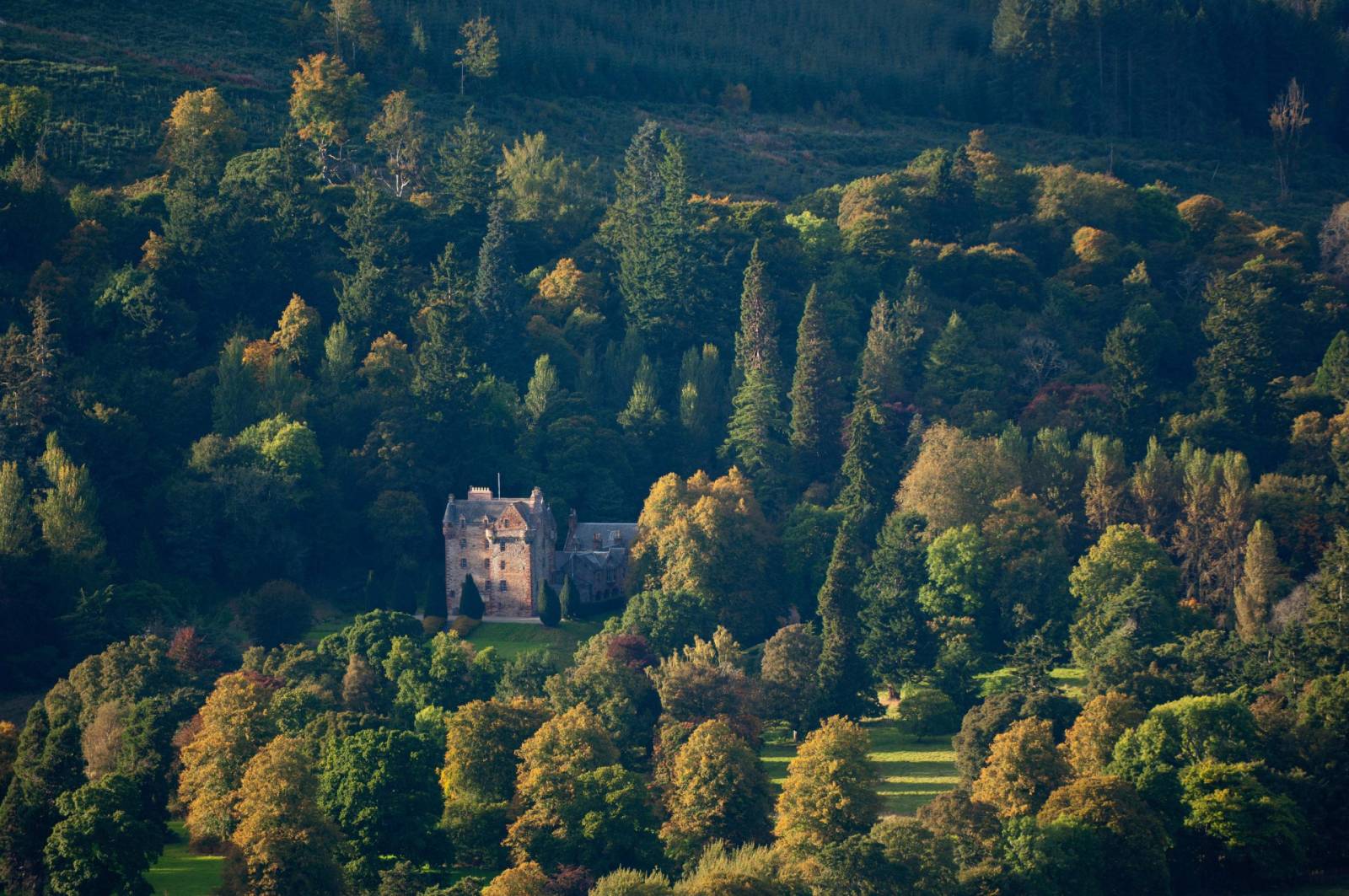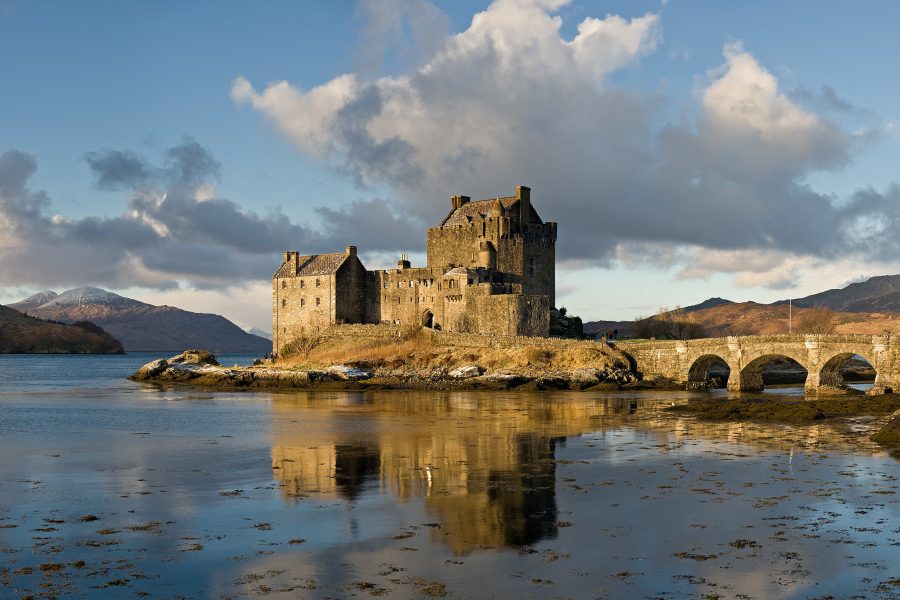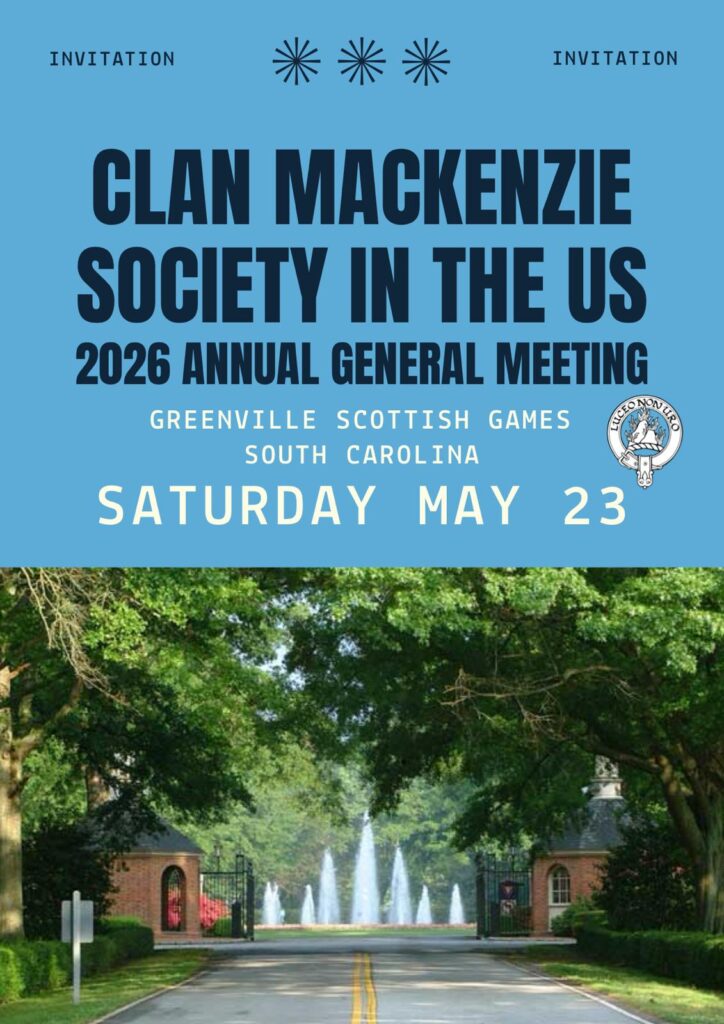The importance of the MacKenzies in the history of Scotland is illustrated in the National Gallery in Edinburgh where one of the entrance halls is dominated by Benjamin West’s huge 18th century painting of the clan’s legendary Norman founder, Colin FitzGerald, saving the king from a stag. Shown Below:
While the MacKenzies’ ancestors are said by some to have been Anglo-Normans from Ireland and by others to have been Celtic-Gaels from Argyll, the clan’s immediate progenitors were associated in the 13th century with the south west of Ross [see the summary history 1200-1300]. The clan’s namefather and early chiefs belonged to a parental kindred that included the ancestors of the Mathesons – and maybe of other Kintail clans as well – who were all bound in the 14th century by feudal and kinship ties to the original Earls of Ross [see 1300-1400].
When Clan Donald inherited the Earldom of Ross the MacKenzie chiefs became their vassals, but as the early Stewart kings asserted themselves in the Highlands, the MacKenzies broke with the Lords of the Isles and allied themselves with the Crown against them [1400-1500]. Cuidich ‘n Righ (Help the King) became the motto of Clann Choinnich, and they benefitted with generous land grants from the Crown and its support in feuds against neighbours such as the Munroes and MacLeods, from whom the MacKenzies took further lands [1500-1600].
The MacKenzie chiefs became Lords Kintail in 1609 and, after the acquisition of Lewis, Earls of Seaforth in 1623. The clan were mostly Royalist in the mid-17th century “Wars of Three Kingdoms”, and the chiefs became Jacobites after the “Glorious Revolution” [1600-1700]. Seaforth’s cousin George was created Earl of Cromarty in 1703 for supporting the new regime while successive chiefs were in exile. In 1745 however, with the chief supporting the government, it was the 3rd Earl of Cromarty who raised a regiment for the Jacobites [1700-1800].
The last of the Seaforth chiefs died in 1815 and after the Napoleonic Wars – in which three regiments raised by MacKenzies had fought – social and economic changes swept over the Highlands and many MacKenzies had to seek a new life elsewhere in Britain or overseas [1800-1900]. Though the depopulation of the Highlands continued, the 20th century also saw a renewed interest in the history and genealogy of the clan, along with the foundation of Clan MacKenzie societies around the world and the recognition in 1980 of a new “Cabarfeidh” [1900-2000].
Content graciously provided by Graeme Mackenzie.



